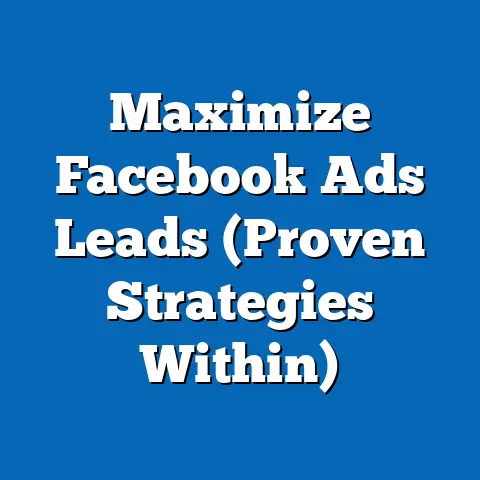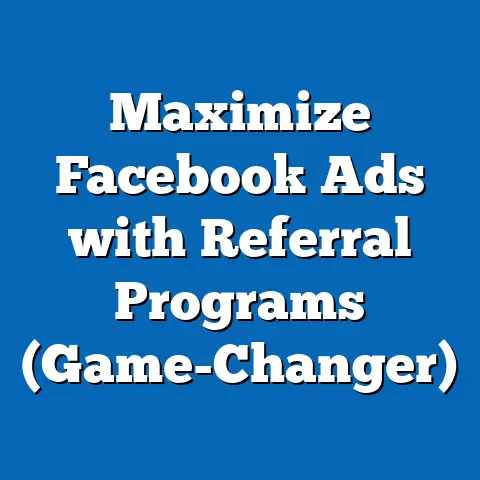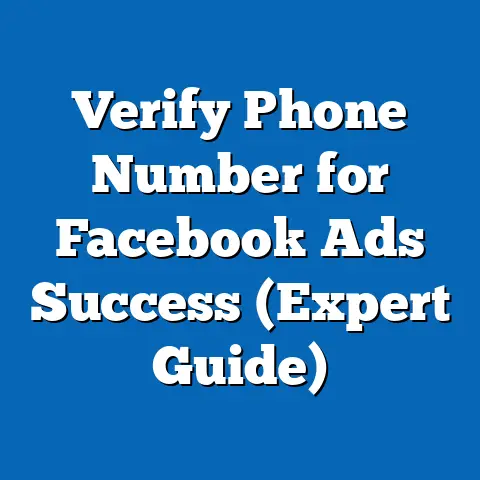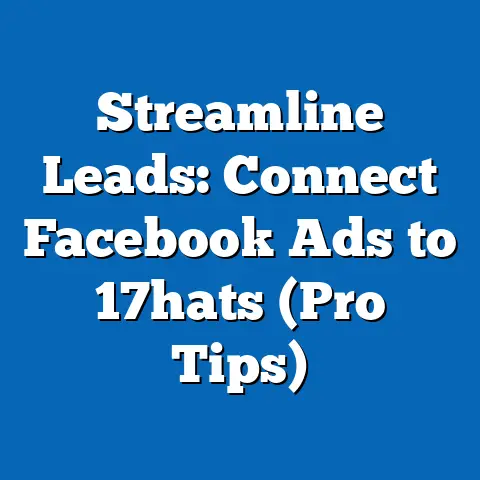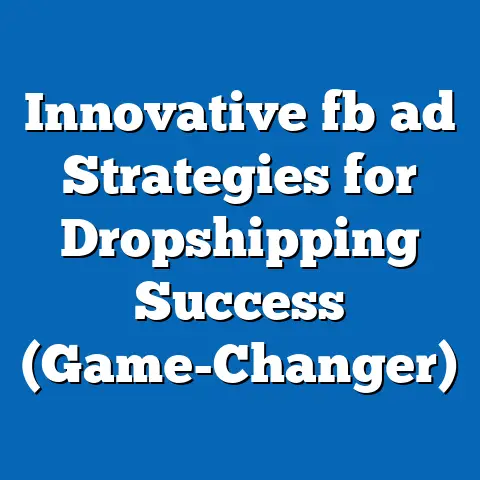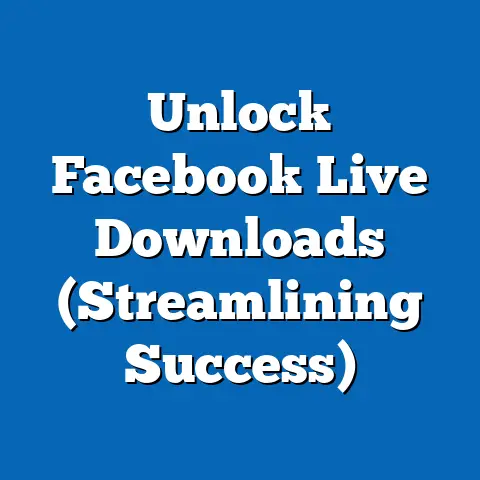Unlock Facebook Ads Pricing Secrets (Game-Changing Guide)
Let’s be honest, navigating the world of Facebook Ads can feel like trying to decipher ancient hieroglyphics. And one of the most perplexing aspects? Understanding how much you’re actually going to pay. It’s not a simple, straightforward answer, and that’s where many advertisers stumble. But what if I told you there’s a way to unlock the secrets of Facebook Ads pricing, turning it from a daunting mystery into a powerful tool for maximizing your ROI?
Think of Facebook Ads pricing as a game. The better you understand the rules, the better your chances of winning. And winning in this context means achieving your business goals – whether it’s boosting brand awareness, driving website traffic, or increasing sales – all while staying within your budget. This isn’t just about spending less; it’s about spending smarter.
This article is your key to unlocking those secrets. I’m going to break down the intricacies of Facebook Ads pricing, revealing the hidden levers you can pull to optimize your campaigns and achieve a game-changing return on your investment. I’ve spent years managing Facebook ad campaigns for businesses of all sizes, and I’ve seen firsthand how a deep understanding of pricing can make or break a campaign. Let’s dive in!
Section 1: Understanding Facebook Ads Pricing Models
At its core, Facebook Ads operates on two primary pricing models: Cost Per Click (CPC) and Cost Per Impression (CPM). Understanding the difference between these models is the first step towards mastering Facebook Ads pricing.
- Cost Per Click (CPC): As the name suggests, you pay each time someone clicks on your ad. This model is ideal when your primary goal is to drive traffic to your website or a specific landing page. You’re essentially paying for direct engagement. I often recommend CPC for campaigns focused on lead generation or direct sales, where getting people to your site is crucial.
- Cost Per Impression (CPM): With CPM, you pay for every 1,000 impressions your ad receives, regardless of whether anyone clicks on it. This model is best suited for campaigns focused on brand awareness, where the goal is to get your ad seen by as many people as possible. I’ve found CPM particularly effective for launching new products or services, where visibility is key.
Choosing the Right Model:
The choice between CPC and CPM depends entirely on your campaign objectives. Ask yourself: What do I want to achieve with this ad?
- Brand Awareness: CPM is your friend. Focus on getting your brand in front of as many eyes as possible.
- Website Traffic: CPC is the way to go. Drive targeted traffic to your website and encourage conversions.
- Lead Generation: CPC can be effective, especially if you’re directing users to a lead capture form on your website.
- Direct Sales: CPC can be powerful, but make sure your landing page is optimized for conversions.
Facebook’s Auction System:
Both CPC and CPM are influenced by Facebook’s auction system. This isn’t your grandma’s auction; it’s a complex algorithm that determines which ads get shown to users based on a variety of factors, including your bid, ad quality, and relevance to the target audience. The higher your bid and the better your ad quality, the more likely your ad is to be shown.
Takeaway: Understanding the difference between CPC and CPM is fundamental to choosing the right pricing model for your campaign objectives. Remember to consider Facebook’s auction system, which plays a significant role in determining your ad costs.
Section 2: Factors Influencing Facebook Ads Pricing
Now that we’ve covered the basic pricing models, let’s delve into the factors that influence how much you’ll actually pay for your Facebook Ads. These factors are like the ingredients in a recipe; the right combination can lead to a delicious (and cost-effective) campaign.
- Audience Targeting: The more specific your audience targeting, the higher your costs are likely to be. Highly targeted audiences are often more competitive, driving up the price of reaching them. However, a highly targeted audience is also more likely to convert, making the higher cost worthwhile. I’ve seen this firsthand with campaigns targeting niche interests; the CPC was higher, but the conversion rate was significantly better.
- Ad Placement: Where your ad appears on Facebook (e.g., News Feed, Right Column, Instagram) can also affect pricing. Placements with higher visibility and engagement, like the News Feed, typically cost more. Experiment with different placements to see which ones deliver the best results for your budget.
- Competition: The more advertisers targeting the same audience, the higher the competition and the higher the costs. This is particularly true during peak seasons like holidays or Black Friday. Be aware of these trends and adjust your bidding strategy accordingly.
- Ad Quality and Relevance: Facebook rewards high-quality, relevant ads with lower costs and better performance. Your ad’s relevance score, which is based on user feedback and engagement, plays a crucial role in determining your ad’s cost. Create ads that are engaging, informative, and directly relevant to your target audience. I once ran two identical ads, but one had a slightly better image. The ad with the better image had a higher relevance score and a lower CPC.
- Bidding Strategies: Facebook offers a range of bidding strategies, from automatic bidding (where Facebook sets your bids for you) to manual bidding (where you set your own bids). Automatic bidding can be a good starting point, but I generally recommend manual bidding for more experienced advertisers who want greater control over their costs.
- Time of Year/Day: Advertising costs often fluctuate depending on the time of year and day. For example, advertising costs tend to be higher during the holiday season due to increased competition. Similarly, certain days or times may be more expensive depending on your target audience’s online behavior.
Case Study:
I worked with a local bakery that wanted to promote their new line of seasonal pies. We initially targeted a broad audience of “food lovers” in the city, but the costs were high and the results were underwhelming. We then narrowed our targeting to people who had expressed interest in “baking,” “pies,” and “local food.” The CPC increased slightly, but the conversion rate skyrocketed, resulting in a much lower cost per sale.
Takeaway: Facebook Ads pricing is influenced by a complex interplay of factors. By understanding these factors and optimizing your campaigns accordingly, you can significantly reduce your costs and improve your ROI.
Section 3: Decoding Facebook Ads Auction Dynamics
The Facebook Ads auction is the engine that drives the entire pricing system. It’s a real-time, automated process that determines which ads get shown to users based on a combination of factors, including your bid, ad quality, and estimated action rates. Understanding how this auction works is crucial for optimizing your campaigns and lowering your costs.
- Ad Relevance Score: This is a key metric that reflects how relevant your ad is to your target audience. Facebook calculates the relevance score based on user feedback, such as likes, comments, shares, and negative feedback (e.g., hiding the ad). A higher relevance score translates to lower costs and better ad delivery.
- Estimated Action Rates: Facebook estimates how likely users are to take a desired action, such as clicking on your ad or making a purchase, based on their past behavior and the characteristics of your ad. The higher the estimated action rate, the more likely your ad is to be shown.
- Total Value: Facebook doesn’t just look at your bid; it considers the total value of your ad, which is a combination of your bid, estimated action rates, and ad relevance score. This means that you can win the auction even if your bid is lower than your competitors, as long as your ad is highly relevant and engaging.
Optimizing for the Auction:
To improve your auction performance and lower your costs, focus on the following:
- Create High-Quality Ads: Use compelling visuals, engaging copy, and a clear call to action.
- Target the Right Audience: Ensure your ads are shown to people who are genuinely interested in your product or service.
- Improve Your Relevance Score: Monitor your relevance score and make adjustments to your ad creative or targeting if it’s low.
- Test Different Ad Formats: Experiment with different ad formats, such as image ads, video ads, and carousel ads, to see which ones perform best with your target audience.
- Monitor and Adjust: Continuously monitor your campaign performance and make adjustments to your bidding strategy, ad creative, or targeting as needed.
The Importance of Continuous Monitoring:
The Facebook Ads auction is constantly changing, so it’s crucial to continuously monitor your campaign performance and make adjustments as needed. Don’t set it and forget it! I recommend checking your campaigns at least once a day to identify any potential issues and make timely adjustments.
Takeaway: The Facebook Ads auction is a complex but essential part of the pricing system. By understanding how it works and optimizing your campaigns accordingly, you can significantly improve your auction performance and lower your costs.
Section 4: Strategies for Reducing Facebook Ads Costs
Now for the good stuff! Here are some actionable strategies you can use to reduce your Facebook Ads costs while maintaining or improving your ad performance. I’ve personally used these strategies to help clients save thousands of dollars on their ad campaigns.
- A/B Testing: This is the cornerstone of any successful Facebook Ads campaign. Test different ad creatives, targeting options, and bidding strategies to see what works best for your audience. I recommend testing one variable at a time to isolate the impact of each change. For example, test two different headlines with the same image and targeting to see which headline performs better.
- Retargeting: This is a powerful technique that allows you to show ads to people who have already interacted with your website or your Facebook page. Retargeting audiences are typically more engaged and more likely to convert, resulting in a lower cost per acquisition. I’ve seen retargeting campaigns achieve conversion rates that are 2-3 times higher than standard campaigns.
- Audience Segmentation: Don’t treat all your customers the same! Segment your audience based on demographics, interests, and behavior to create more targeted and relevant ads. This can significantly improve your ad relevance score and lower your costs.
- Lookalike Audiences: This feature allows you to create audiences that are similar to your existing customers or website visitors. Lookalike audiences can be a great way to expand your reach and find new customers who are likely to be interested in your product or service.
- Optimize Your Landing Page: Your landing page is where the conversion happens, so it’s crucial to optimize it for conversions. Make sure your landing page is relevant to your ad, has a clear call to action, and is easy to navigate. A poorly optimized landing page can significantly increase your cost per acquisition.
- Ad Scheduling: Schedule your ads to run during the times when your target audience is most active on Facebook. This can help you improve your ad delivery and lower your costs.
- Monitor Frequency: Ad frequency refers to the number of times a user sees your ad. If your ad frequency is too high, users may become annoyed and start ignoring your ads, resulting in a lower click-through rate and higher costs. Monitor your ad frequency and adjust your targeting or ad creative if it’s too high.
Example:
I worked with an e-commerce store that was struggling with high Facebook Ads costs. We implemented A/B testing to optimize their ad creative and targeting, retargeted website visitors with abandoned carts, and created lookalike audiences based on their existing customers. As a result, they were able to reduce their cost per acquisition by 40% while increasing their sales by 25%.
Takeaway: Reducing Facebook Ads costs requires a combination of strategic planning, continuous testing, and ongoing optimization. By implementing the strategies outlined above, you can significantly improve your ROI and achieve your business goals.
Section 5: Future Trends in Facebook Ads Pricing
The world of Facebook Ads is constantly evolving, and pricing is no exception. It’s important to stay ahead of the curve and anticipate future trends that could influence your advertising costs.
- Changes in User Behavior: As user behavior on Facebook changes, so too will the effectiveness of different ad formats and targeting options. Pay attention to how users are interacting with content on Facebook and adjust your strategy accordingly.
- Privacy Regulations: Increased privacy regulations, such as GDPR and CCPA, are impacting how advertisers can collect and use data for targeting. This could lead to higher costs for certain types of targeting.
- Technological Advancements: New technologies, such as artificial intelligence and machine learning, are being used to optimize ad campaigns and improve ad targeting. This could lead to more efficient ad spending and lower costs.
- New Ad Formats and Features: Facebook is constantly introducing new ad formats and features, such as augmented reality ads and interactive ads. These new formats could offer new opportunities for advertisers to reach their target audience and lower their costs.
- The Rise of Social Commerce: As social commerce becomes more prevalent, the way people shop online is changing. This could lead to a shift in advertising strategies and a greater focus on driving direct sales through Facebook Ads.
Speculating on the Future:
I believe that in the future, Facebook Ads pricing will become even more data-driven and personalized. Advertisers who can leverage data effectively and create highly relevant ads will be able to achieve the best results at the lowest costs.
Takeaway: The future of Facebook Ads pricing is uncertain, but by staying informed, adapting to change, and leveraging new technologies, you can position yourself for success and maintain a competitive edge.
Conclusion
Understanding Facebook Ads pricing is not just about saving money; it’s about maximizing your ROI and achieving your business goals. By mastering the pricing models, understanding the factors that influence pricing, decoding the auction dynamics, and implementing effective strategies for reducing costs, you can unlock the full potential of your Facebook Ads campaigns.
Remember the “best option” concept we discussed at the beginning? That best option is the one that delivers the most value for your investment. It’s not always the cheapest option, but it’s the option that helps you achieve your goals in the most efficient and effective way.
I encourage you to take the secrets you’ve uncovered in this article and apply them to your own Facebook Ads campaigns. Experiment, test, and continuously optimize your strategy to find what works best for your business. And remember, I’m always here to help if you need it. Now go out there and unlock your Facebook Ads potential!

